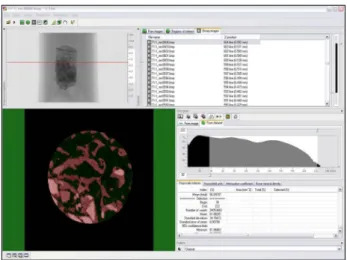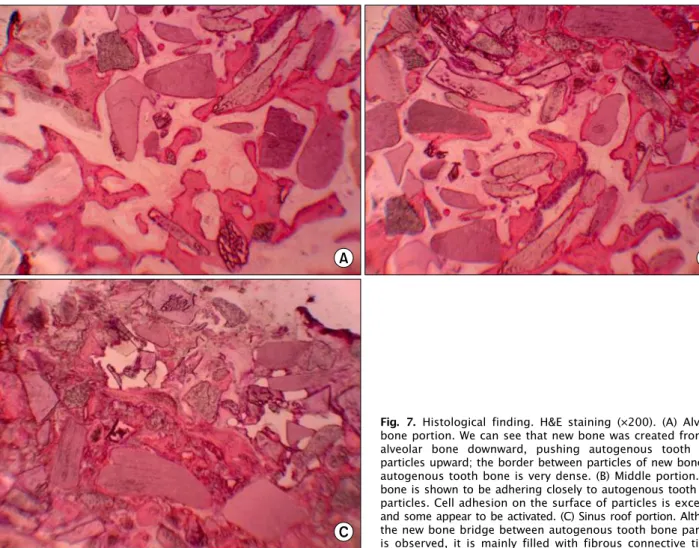Case Report
RECEIVED May 5, 2013, REVISED May 22, 2013, ACCEPTED September 21, 2013 Correspondence to Young-Kyun Kim
Department of Oral and Maxillofacial Surgery, Section of Dentistry, Seoul National University Bundang Hospital 82 Gumi-ro 173 beon-gil, Bundang-gu, Seongnam 463-707, Korea
Tel: 82-31-787-7541, Fax: 82-31-787-4068, E-mail: kyk0505@snubh.org
CC
This is an open access article distributed under the terms of the Creative Commons Attribution Non-Commercial License (http://creativecommons.org/licenses/
by-nc/3.0) which permits unrestricted non-commercial use, distribution, and reproduction in any medium, provided the original work is properly cited.
Evaluation of the Healing Process of Autogenous Tooth Bone Graft Material Nine Months after Sinus Bone Graft:
Micromorphometric and Histological Evaluation
Young-Kyun Kim, Sang-Ho Jun 1 , In-Woong Um 2 , Sooyeon Kim 3
Department of Oral and Maxillofacial Surgery, Section of Dentistry, Seoul National University Bundang Hospital,
1
Department of Oral and Maxillofacial Surgery, Section of Dentistry, Korea University Anam Hospital,
2



